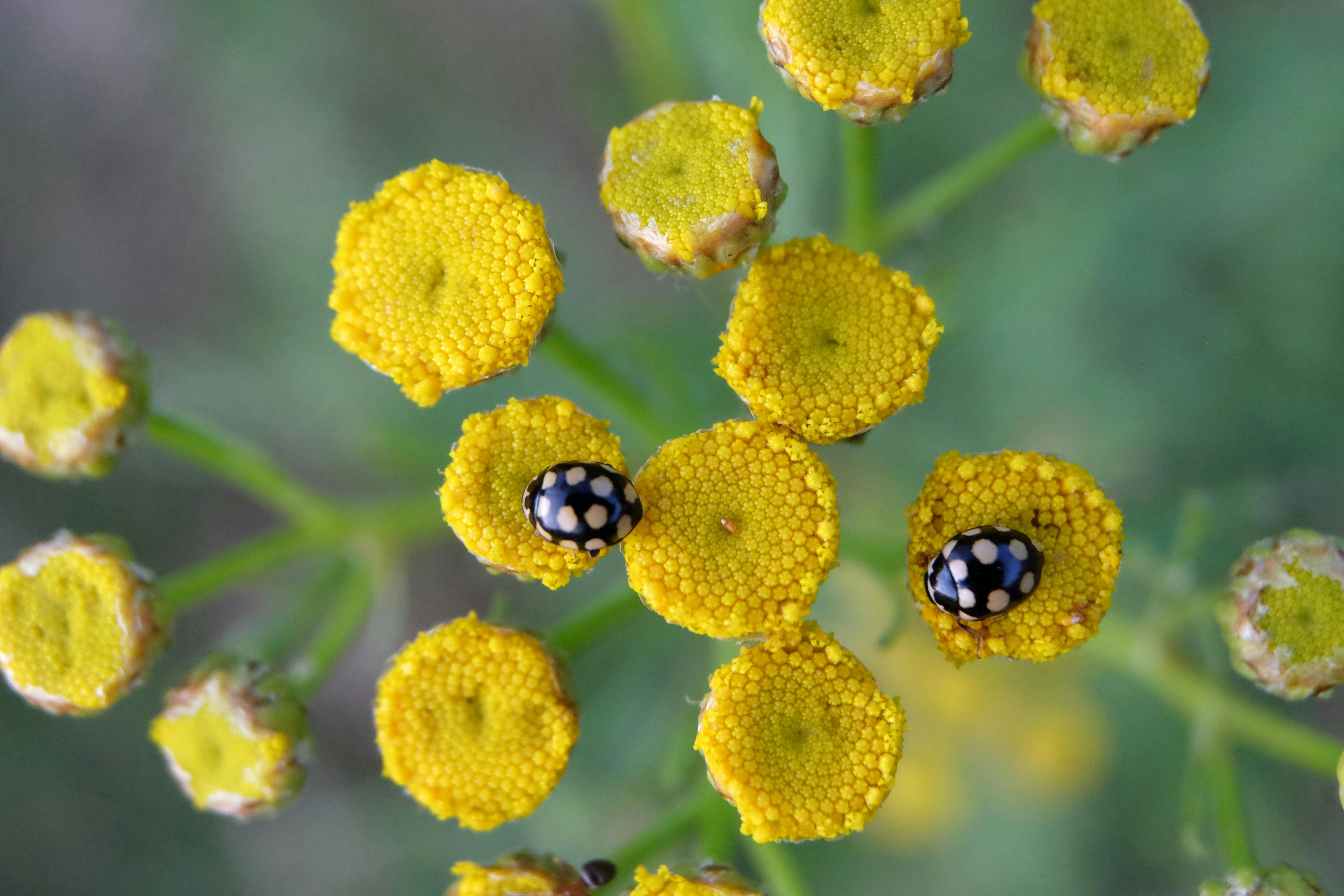Strawberry plants are a popular choice for home gardeners due to their abundant and tasty fruit. Unfortunately, these plants can also be prone to infestation by various insects, including aphids, thrips, mites, caterpillars and slugs. If you find that your strawberry plants are infested with bugs, there are some steps you can take to get rid of them and protect your plants from further damage. In this article, we will discuss the best ways to remove bugs from strawberry plants and how to prevent them from coming back.To get rid of bugs on strawberry plants, start by carefully inspecting the plants for any bugs or eggs. Then use an organic insecticide such as neem oil or insecticidal soap to kill the bugs and their eggs. Be sure to spray the underside of the leaves, where most of the pests are likely to be hiding. Additionally, you can handpick any bugs you find and dispose of them in a bucket of soapy water. Finally, keep your strawberry plants healthy by ensuring that they receive enough sunlight and water and are pruned regularly. This will help prevent future infestations.
Identifying Common Strawberry Plant Pests
Strawberry plants are a favorite target for many pests. Identifying common strawberry plant pests and taking steps to prevent them from damaging your crop is essential. Common strawberry plant pests include aphids, cutworms, crown borers, slugs, thrips, spider mites, and beetles. Each of these pests can cause significant damage to your strawberry plants if left unchecked.
Aphids are tiny insects that feed on the sap of the strawberry plant and can cause stunted growth and distorted leaves. They reproduce quickly and can make a home on the underside of the leaves and stems of the plant. Cutworms are caterpillar-like larvae that feed on the stem and leaves of the strawberry plant. If left unchecked they can completely sever the stem from the root system causing wilting and death of the entire plant.
Crown borers are small beetle-like insects that burrow into the crown area at the base of the plant. This can lead to disease, rotting of the roots, and eventual death if not treated promptly. Slugs will eat away at any exposed parts of your strawberry plants leading to holes in foliage or fruits as well as stunted growth or wilting in severe cases.
Thrips are small insects with piercing mouth parts that suck out vital fluids from your plants leading to discoloration or deformed fruit or foliage if left unchecked for too long. Spider mites are also small insects that spin webs between stems or between leaves leading to discoloration and wilting if not treated right away. Finally, beetles such as Japanese beetles have been known to feed on foliage or flower petals leaving behind jagged edges which can lead to weakened plants over time if not taken care of quickly with organic pest control methods such as companion planting or handpicking.
The best way to prevent these pests from damaging your crop is by regularly monitoring for signs of infestation including discolored foliage, wilting plants, holes in fruits or foliage, webs between stems/leaves, jagged edges on foliage/flower petals etc., then taking steps to control them using organic methods such as companion planting or handpicking when possible before resorting to chemical pest control solutions when necessary.
Preventing Bugs On Strawberry Plants
Strawberry plants are vulnerable to a variety of insects, including aphids, thrips, mites, scale insects and slugs. To prevent damage to the plants, it is important to take preventive measures. One of the most effective ways to prevent bug infestations is to keep the area around strawberry plants clean and free of weeds and debris. This will help reduce the number of insect-friendly environments in which pests can thrive.
It is also important to regularly inspect your strawberry plants for signs of insect activity. If you notice any symptoms such as wilting leaves or damaged fruits, take immediate action to identify and control the pest problem. Common control methods include using insecticidal soaps or oils, or hand picking the pests off of the plants.
If you are experiencing recurring pest problems with your strawberry plants, consider using a natural repellent such as diatomaceous earth or neem oil. These products work by coating the plant surfaces with microscopic particles that act as an invisible barrier against certain types of insects. Applying these products on a regular basis can help reduce pest infestations not only on strawberry plants but also on other garden crops.
You can also attract beneficial insects such as ladybugs and lacewings that feed on common garden pests such as aphids and mites. Planting flowers such as daisies and cosmos in your garden will provide food sources for these beneficial bugs while keeping harmful pests away from your strawberry plants.
Finally, consider using row covers to protect your strawberry plants from birds, rabbits and other animals that may feed on them during certain times of the year. These covers can be easily draped over rows of strawberries at night when birds are active and removed during the day when pollinators are present in your garden.
Physical Removal Of Bugs From Strawberry Plants
Strawberry plants are vulnerable to a variety of pests and diseases. In order to keep the plants healthy, it is important to remove any bugs that may be present on the plant. Physical removal of bugs from strawberry plants can be done manually or with the help of a vacuum cleaner.
Manual removal involves examining each strawberry plant for signs of pests and then using tweezers or a handheld vacuum cleaner to remove them. If the infestation is severe, it may be necessary to spray an insecticide or fungicide onto the affected area. This should only be done after consulting with a professional who can advise on the best course of action.
A handheld vacuum cleaner can also be used to remove bugs from strawberry plants. This is a convenient and effective way to get rid of pests without damaging the plant. The vacuum cleaner should have an adjustable nozzle so that it can reach into hard-to-reach areas such as between leaves and branches. It is important to make sure that the nozzle is set to a low suction setting so that it does not damage delicate parts of the plant.
Physical removal of bugs from strawberry plants is an effective way to keep them healthy and free from pests. It requires patience and attention in order to ensure that no pests are left behind, but it is worth it in order to protect your strawberry plants from disease and infestation.
Natural Remedies For Controlling Pests On Strawberry Plants
Strawberry plants are prone to various pests, such as aphids, slugs, and spider mites. While chemical pesticides can be used to control these pests, there are natural remedies available that can help protect your strawberry plants from harm. Here are some of the most effective natural remedies for controlling pests on strawberry plants:
1. Neem oil: Neem oil is an excellent natural pest repellent and can be used to effectively control aphids, spider mites, and other common strawberry plant pests. To use neem oil on your strawberry plants, mix 1 teaspoon of neem oil with 1 quart of water and spray the solution onto the foliage of the plant.
2. Diatomaceous earth: Diatomaceous earth is a naturally occurring substance composed of fossilized algae that has a sharp texture that can help control slugs and other crawling insects on your strawberry plants. Sprinkle diatomaceous earth around the base of the plant or in areas where you suspect slugs may be present.
3. Companion planting: Planting certain companion plants near your strawberry patch can help repel certain pests from attacking your strawberries. Garlic and chives are great companion plants for keeping aphids away from strawberries, while marigolds can help repel nematodes that may damage the roots of your strawberry plants.
4. Hand picking: One of the simplest methods for controlling pests on strawberry plants is to simply pick them off by hand when you spot them. This is especially effective for controlling slugs, which can easily be removed from the plant without causing any damage.

Spraying Insecticides To Control Pests On Strawberry Plants
Spraying insecticides is one of the most effective methods for controlling pests on strawberry plants. Insecticides are chemical compounds that are designed to kill or repel certain insects. They can be applied to the leaves, stems, and flowers of strawberry plants. The most common types of insecticides used on strawberry plants include organophosphates, pyrethroids, and neonicotinoids. Each type has its own advantages and disadvantages, so it is important to research which type of insecticide is best suited for the particular pest problem you have.
When using insecticides to control pests on strawberry plants, it is important to use them correctly. Always read and follow the label directions for the specific product you are using. It is also important to know what type of pest you are trying to control so that you can select an appropriate insecticide. In addition, be sure to apply the insecticide evenly over all parts of the plant in order to ensure effective coverage.
It is also important to remember that some insects may have beneficial roles in your garden or ecosystem such as pollinators or predators of other pests. Therefore, it is important to identify the pest before deciding whether or not an insecticide should be used. In some cases, physical removal or other non-chemical methods may be more appropriate than using an insecticide.
In conclusion, spraying insecticides can be an effective method for controlling pests on strawberry plants when used correctly and responsibly. However, it should only be done after careful consideration of which type of product should be used and how it should be applied in order to ensure its effectiveness and safety for both people and the environment
Insecticides For Controlling Pests On Strawberries
Insecticides are one of the most effective and widely used methods for controlling pests on strawberries. Insecticides come in a variety of forms, including sprays, dusts, granules, baits, and foggers. Each type of insecticide has its own advantages and disadvantages.
Sprays are one of the most common forms of insecticide used to control pests on strawberries. They are easy to apply and can be applied either directly to the plants or as a perimeter treatment around them. The downside is that they are likely to be less effective against larger pests such as aphids or mites.
Dusts are another form of insecticide that is often used for controlling pests on strawberries. These products contain tiny particles that adhere to the pest’s body when it comes into contact with them. The advantage of dusts is that they can provide long-lasting protection against multiple types of pests. However, they may not be effective against flying insects such as whiteflies or thrips.
Granules are a form of insecticide that comes in a small pellet form and is usually applied by sprinkling it around the base of the plants or along pathways where insects travel. Granules can be more effective than sprays or dusts because they last longer in the environment and have less potential to drift away from their intended target area.
Baits are another form of insecticide that can be used for controlling pests on strawberries. These products contain an attractant such as honey or molasses which lures the pests into consuming them, then killing them with an active ingredient once ingested. Baits can provide long-lasting protection but may not be suitable in all cases due to their selective targeting nature.
Foggers are another type of insecticide that produces a fine mist or fog when sprayed over an area, which will then kill any insects present in the vicinity by suffocating them with particles suspended in the air. This method is often used for large-scale pest control due to its wide coverage area but may not be suitable for small-scale applications due to its high cost and potential environmental hazards associated with its use.
Applying Insecticidal Soaps For Controlling Pests On Strawberries
Insecticidal soaps are effective in controlling insect pests on strawberries. These soaps work by disrupting the cell membranes of insects and dehydrating them. They are safe to use as they are made from natural ingredients like plant oils and fatty acids. They can be used to control a wide variety of pests such as aphids, mites, mealybugs, thrips, whiteflies and caterpillars. The best time to apply insecticidal soaps is when the pest population is low and before any damage has occurred.
When applying insecticidal soaps, it is important to read the label carefully and follow all safety instructions. It is also important to spray the entire plant thoroughly as well as the undersides of the leaves where many pests tend to hide. Insecticidal soaps should be applied every 5-7 days for two to three weeks or until the pest population has been significantly reduced.
To ensure that the insecticidal soap is effective, it is important to use one that is specifically formulated for use on strawberries. Most commercially available insecticidal soaps have a short residual effect, meaning that they will only remain active on the plant for a few hours after application before breaking down in sunlight or washing off with rain or irrigation water. Therefore, reapplication may be necessary if there are still signs of pest activity after several days.
Insecticidal soaps can be an effective method of pest control if used correctly and at the right time. They are safe for humans and wildlife and break down quickly into harmless components once applied making them a great choice for organic farmers looking to reduce pesticide use in their strawberry crops.

Conclusion
Getting bugs out of strawberry plants can seem like an overwhelming task, but it is possible. Start by looking for signs of infestation and then use a combination of natural remedies and chemical treatments to get rid of the bugs. Be sure to monitor the plants regularly for signs of new infestations and take action quickly when necessary. With proper care, your strawberry plants should be able to thrive and produce a delicious crop of strawberries.
It is important to remember that while chemical treatments are effective, they can also be harmful if used incorrectly or too often. Natural remedies are often just as effective as chemical treatments, so consider trying those first. Taking the time to learn about what types of insects may be present on your strawberry plants and how best to treat them can save you a lot of time and effort in the long run.
By following these steps, you will be able to get rid of bugs from your strawberry plants quickly and effectively. With patience and dedication, you can enjoy a bountiful harvest this year!



